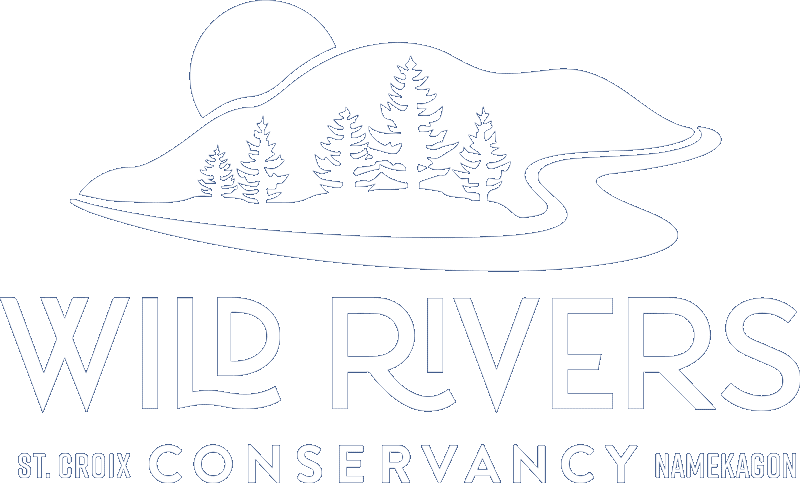Imagine a grass that can grow to heights of 12 to 20 feet. For invasive phragmites, the sky might seem to be the limit, which makes monitoring efforts essential to stopping their spread. Katie Sickmann, Wild Rivers Conservancy’s Invasive Species Coordinator, and Jeremiah Walters, Wild Rivers Conservancy’s Naturalist, have been conducting monitoring efforts as part of a partnership between Chisago County and Wild Rivers Conservancy for the past two years to ensure that this persistent plant doesn’t spread any farther.
As with any quest, there is a challenge—there’s also a native phragmites. The invasive plant came from Europe and was used as a windblock and as an organic barrier at wastewater treatment facilities. Invasive phragmites are very good at filtering water and excess nutrients, but their massive seed heads mean the plant can spread like wildfire. As a riparian plant, it thrives in wetlands, roadside ditches, and shorelines. Without monitoring and control efforts, invasive phragmites have been found to lower plant diversity, impact food webs, and reduce the diversity and abundance of invertebrates, fish, and some birds. This one plant can have a far-reaching and negative impact on ecosystems.
The rich biodiversity of the St. Croix River and its watershed contributes to the high quality of recreational opportunities and enjoyment of the river’s beauty for all. Protecting this biodiversity relies on monitoring efforts for invasive species—like those conducted by Katie and Jeremiah—and sometimes control efforts.
Monitoring
But what do you look for when there is a native and an invasive version of the same plant? For starters, it helps to monitor when the temperatures are starting to get colder. The inflorescence, or seed head, becomes noticeable, which provides the most obvious clue. Invasive phragmites have more of a broom-looking seed head and can get top heavy from the seed head. “It’s feathery, but looks like it holds a ton of seeds,” says Katie. A defining characteristic of native phragmites is a thick, distinctive brown smudge line at the legule, where the sheath meets the leaf. Many but not all native phragmites also have a symbiotic relationship with a fungus, so if the sheaths of the native phragmites are peeled back, they have perfect circular black spots.
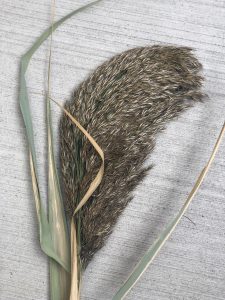
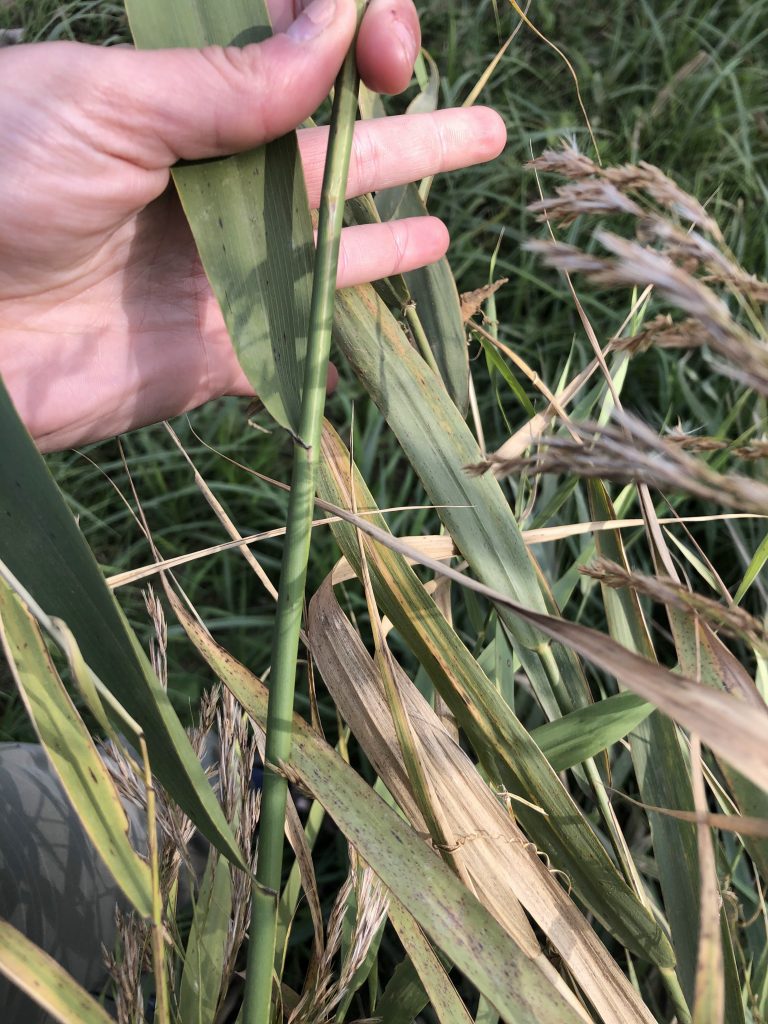
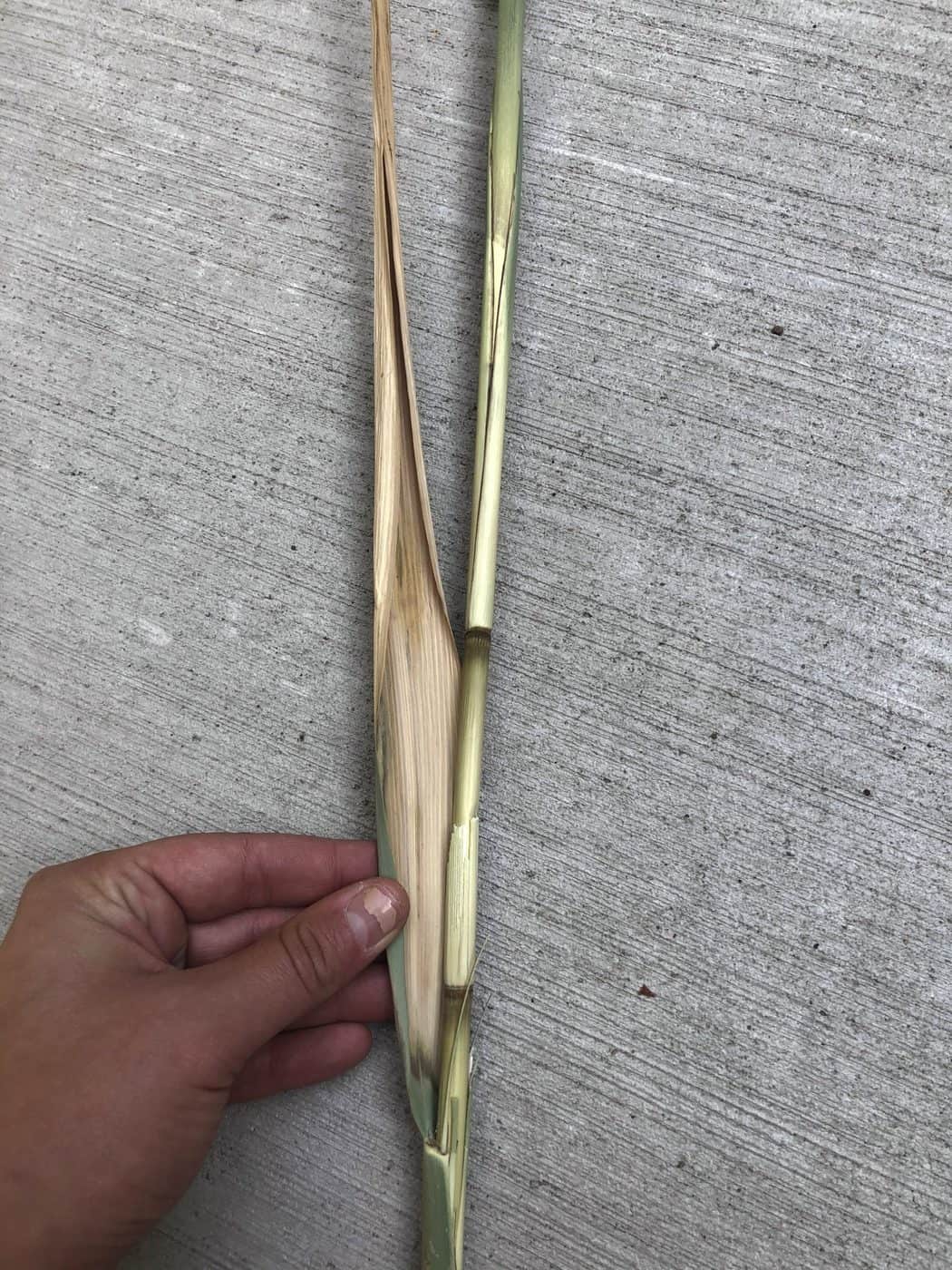
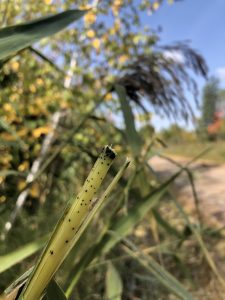
Monitoring efforts by Wild Rivers Conservancy staff in Chisago County began in 2019 after the county wanted to have a better visualization of where invasive phragmites were located. “The point of us doing these roadside surveys and monitoring is so that they can have not only a better depiction of where it is located within the county but can also develop a management strategy,” Katie says, also noting that they provide the county with maps of where those locations are, which makes for a stronger grant proposal if they know exactly how many populations there are within the location of the county. These management grants and funding opportunities help combat the spread of this invasive species, working with landowners who have invasive phragmites on their property to protect the quality of their lands and waters through cost-share opportunities.
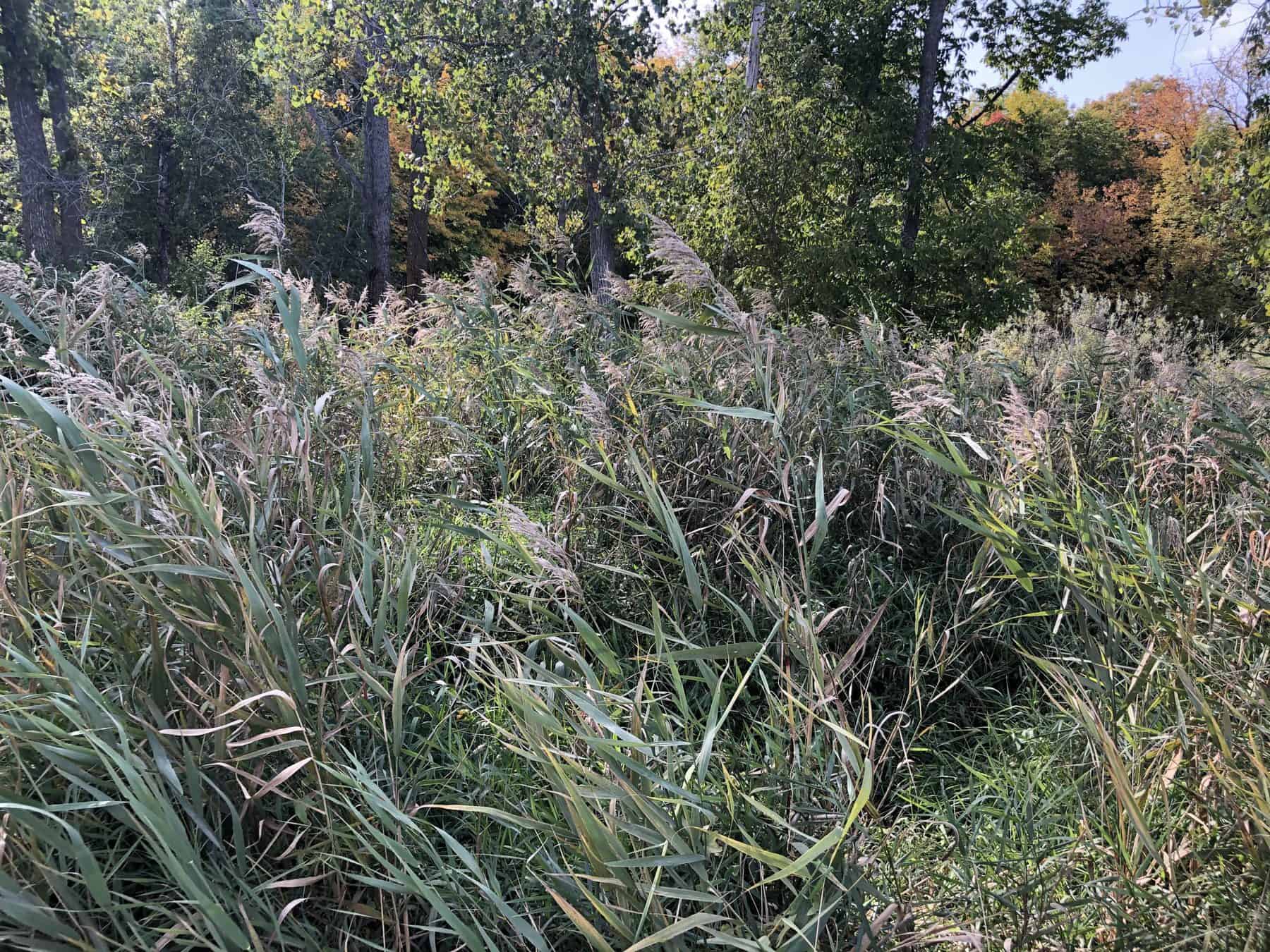
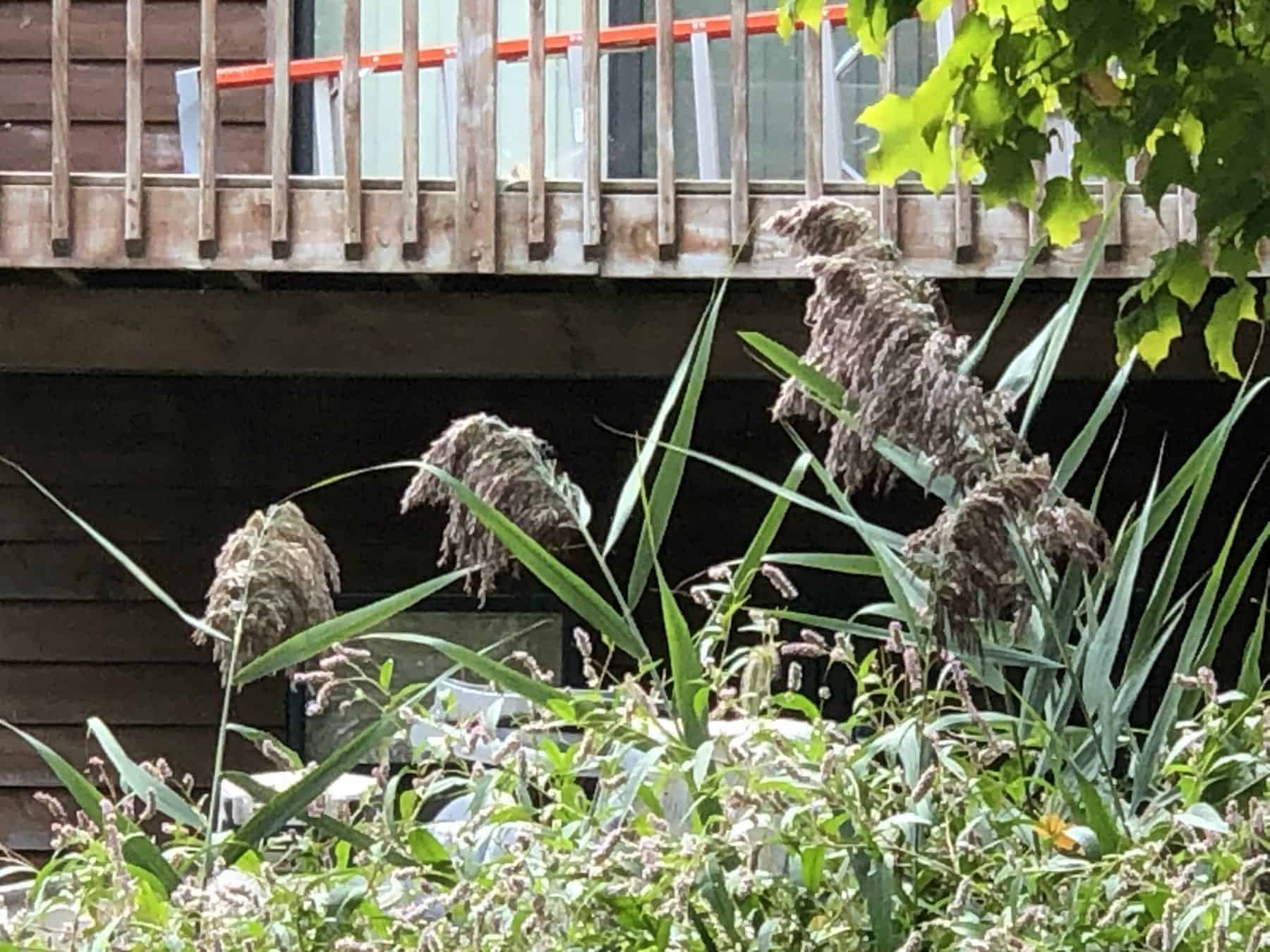
The monitoring process itself requires spending a lot of time on the road and standing in ditches. “Picture yourself driving for 8 hours a day going 30 miles an hour—some of it was highways, some of it was just dirt roads in the country. We saw a lot of cool stuff,” says Jeremiah. While practice does help in distinguishing between invasive and native phragmites, being thorough is essential. During their 2020 monitoring efforts, Katie and Jeremiah took samples in multiple locations and found one new invasive population of phragmites in their monitoring area of nearly 200 miles in the Nessel and Fish Lake Townships of northern Chisago County. The invasive phragmites sample was verified by the University of Minnesota, who received the samples—called ‘vouchers’—from Katie after the monitoring efforts concluded. Photos and GPS coordinates were shared with the county and reported to EDDMapS to help locate the invasive population, too.
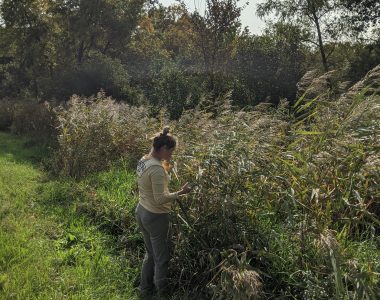
Taking vouchers can be a bit tricky due to the size of the seed head. Jeremiah says, “It’s like a volleyball—it’s huge, whereas the native [seed head] is kind of dainty.” Following the monitoring protocols from the University of Minnesota means that photos are taken or the seed heads are cut off, placed in a gallon Ziploc bag, and sealed carefully to prevent any additional spread. When the time comes to dispose of the seed heads, they are placed in a black garbage bag and put in the trash.
While invasive phragmites can grow tall and spread like wildfire, continual monitoring efforts make a big difference in stopping the spread. A grass that can get up to 20 feet tall “almost reminds me of Dr. Suess,” Katie says. “There’s no stands that get up to 20 feet tall in our area, because it is newer compared to out east.” But with the help of monitoring data, management plans, and PlayCleanGo practices, this invasive grass will find itself facing a formidable challenge to spread any farther.
Winterizing Your Garden? Stop the Spread with these simple tips...
Invasive phragmites aren’t the only plant that can spread its seeds with ease. Some plants have seeds that will overwinter and germinate in the spring. “There’s plenty of invasive plants that can do this,” says Jeremiah, including wild parsnip and buckthorn. “A lot of plant strategies are to have seeds that have the barb on them,” adds Katie. “That can be just as true if a dog, or an animal, or a human being is walking through a phragmites stand, because the seeds are so little and can attach.”
That’s why following PlayCleanGo protocols and wiping off your boots, clothing and equipment is so important when outdoors. And while some invasive plants might pop up in your garden, there are some easy steps home gardeners can take to stop the spread while preparing for winter:
- “If people are cutting back their perennials and garden and taking things out, I would bag it and throw it,” says Katie. “The safe bet is to bag it or burn it, but not compost it. Don’t put it with your leaves, or in a pile at the back of your house to just sit.”
- Going out and pulling weeds, especially if you don’t recognize them, is a good rule of thumb. “If you don’t think it’s native, pull it,” Katie says. Jeremiah adds, “Where there’s one, there’s more. If you see one you’re not aware of and you see more of it, you can almost guarantee [it’s invasive].”
- Be sure to also cover your perennials before snowfall, especially if they are first-year plants. “I always put mulch and/or hay over my perennials before the snowfall. It acts as extra insulation, especially if it is going to be a year where we don’t get a lot of snow and it is just cold. When they are a first-year established plant, they are less likely to come back with winter kill,” says Katie.
- The only invasive species that really shows throughout the snowy season is buckthorn, but invasive species tend to come up quicker in the spring than native species—garlic mustard being one prime example. Keep an eye out for invasive species and your garden will be happier and healthier for it!
If you would like to support Wild Rivers Conservancy’s important conservation work, please donate today.
